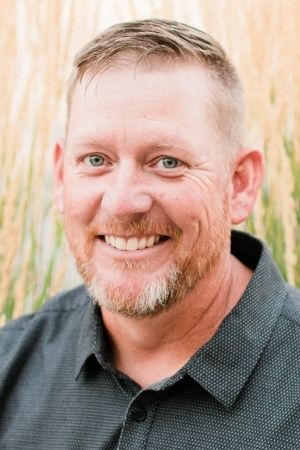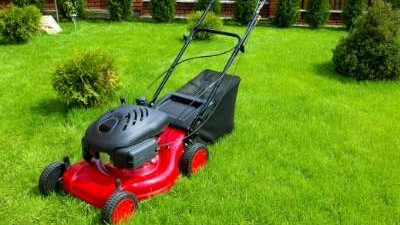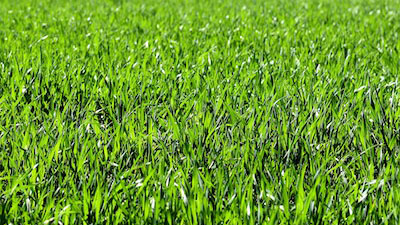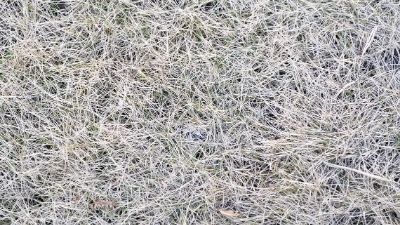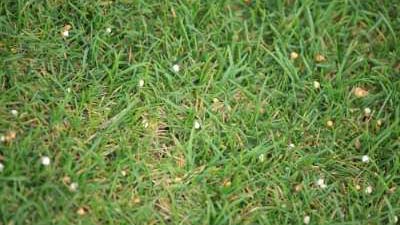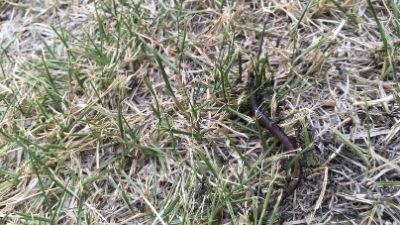Northern Utah Turfgrass Management Calendar
Seeding
Cool-season grasses, such as Kentucky bluegrass or the fescues, may be seeded any time from midspring to early fall, but late summer is the optimum seeding time in northern Utah. The warmth of the soil in late summer is more advantageous for seed germination than the wet and cool soil conditions of the spring, allowing for faster germination (allow 4- 6 weeks before expected first frost). In addition, cool-season grasses planted in the late summer will have both the cool fall and spring growing seasons to establish before the heat and dryness of the summer months returns. Annual weed pressure is also lower in the late summer and early fall than during the spring months. Warm-season grasses, such as buffalograss or blue grama, should be seeded in the spring or early summer months to take best advantage of the warmer temperatures that they prefer.
Refer to Preparing Soil for Turfgrass Establishment Northern Utah

to Box Elder, Cache, Daggett, Davis, Duchesne, Juab, Morgan, Rich, Salt Lake,
Summit, Tooele, Wasatch, Weber, Salt Lake, Summit and Utah counties.
(Image credit: Terence Larson)
Management Calendar
| March | April | May | June | July | Aug | Sept. | Oct. | Nov. | |
|---|---|---|---|---|---|---|---|---|---|
| Seeding-Cool Season Grasses |
✓ | ✓ | ✓ | ✓ | |||||
| Seeding-Warm Season Grasses |
✓ | ✓ | |||||||
| Overseeding-Cool Season Grasses |
✓ | ✓ | ✓ | ✓ | |||||
| Sodding | ✓ | ✓ | ✓ | ✓ | ✓ | ✓ | ✓ | ||
| Fertilization-Cool Season Grasses |
✓ | ✓ | ✓ | ||||||
| Fertilization-Warm Season Grasses |
✓ | ✓ | |||||||
| Aeration- Cool Season Grasses |
✓ | ✓ | ✓ | ||||||
| Aeration- Warm Season Grasses |
✓ | ✓ | ✓ | ||||||
| Preemergent Weed Control | ✓ | ✓ | ✓ | 2nd app. | 2nd app. | ||||
| Broadleaf Weed Control | ✓ | ✓ | ✓ | ✓ |
*These are general guidelines based on average weather conditions. Adjustment will be necessary during extremes of temperature or precipitation.
Overseeding
Overseeding bare patches or areas of thinning turf may be accomplished in late winter, early spring, or fall. In the spring and fall, a disk-type seeder may be used to drop seed into slits in the soil. Alternatively, overseeding may be done following routine aeration practices.
Refer to Preparing Soil for Turfgrass Establishment
Northern Utah Turfgrass Cultivars for Utah
Sodding
Sodding may be done at almost any time of the year provided water is available for irrigation. However, sod should not be laid when the soil is frozen. Sod may be laid prior to freezing, but care should be taken to keep it from drying out during the winter months. Appropriate soil preparation will also improve sod root growth.
Fertilization
Fertilization is the most important management practice for improving the overall quality of turfgrasses. Have soil tested every 2-3 years to obtain fertilizer recommendations for phosphorus and potassium. Routine soil tests for nitrogen, however, are not available. Instead, recommended nitrogen applications of 2-4 pounds per 1,000 sq. ft. annually are based on turfgrass research performed at Utah State University. Standard recommendations are to apply 1 pound of actual N with each fertilization.
Soil testing is available through the Utah State University Analytical Laboratory and soil testing kits and instructions are available at all USU County Extension offices.
Mowing
Mowing is the most basic management practice and one of the simplest things that may be done to improve grass appearance. In northern Utah, mowing should start when active growth begins in the spring and should continue until the grass stops growing in the fall. Ideally, no more than one-third of the total length of the grass blades should be mowed off at one time and clippings should be
recycled into the lawn. For example, if the grass is 4 inches high, mow no lower than 3 inches. Higher mowing heights improve grass resilience to hot weather. Consider a minimum mowing height of 2.5 to 3 inches. The exception would be the last mowing, which should be shorter (1.5 in.) to help avoid disease issues over the winter/early spring months.
Aeration
Aeration removes plugs of turf and soil creating a system of large pores that facilitates air, water and nutrient movement into the soil. Aeration may also improve soil compaction and encourage microbial activity to break down excessive thatch. Aeration should be timed to coincide with periods of active grass growth (early to mid-spring and/or late summer to early fall for cool season grasses and early to mid-summer for warm season grasses). Core aeration using a hollow tine aerator (3-4” length, ¼-¾” diam.) is recommended. For best results, aerate in one direction and once again at 90 degrees to the first direction. If aeration is performed in the spring, consider an application of preemergent herbicide where weeds have been prevalent.
Weed Control
Establishing and maintaining a healthy, dense turfgrass stand is the best defense against weeds. However, there are several options for weed control should weeds become problematic. Control of annual weeds (crabgrass, spurge) may be accomplished by applying preemergence herbicides prior to weed seed germination in early to midspring. Broadleaf weed control may be accomplished by applying postemergence herbicides during periods of active weed growth. For both preemergence and postemergence herbicides, choose products labeled for control of the weeds of concern and carefully follow label instructions to avoid non-target plant damage.
Weed Control Options for Residential Lawns in Utah.
Irrigation
Irrigation is typically necessary to support healthy turfgrass growth in northern Utah, though different turfgrass species have different water requirements. The efficient use of water for irrigation is also critical, not only to conserve limited water resources, but also for the health of the grass plants. In addition to following a schedule based on turfgrass water requirements, irrigate early in the morning to avoid evaporative losses of water and avoid windy times of the day. Also, check irrigation systems monthly for leaks, broken or clogged
sprinkler heads, and other maintenance issues.
| Month | Irrigation Interval |
|---|---|
| Startup until April 30 | Once every 6 days, IF needed |
| May | Once every 4 days, IF needed |
| June | Once every 3 days |
| July | Once every 2 days |
| August | Once every 3 days |
| September | Once every 6 days |
| October 1 until shutdown | Once every 10 days, IF needed |
Reference Simple Sprinkler Performance Testing fact sheets.
- Simple Sprinkler Testing for Box Elder County
- Simple Sprinkler Testing for Cache County
- Simple Sprinkler Testing for Davis County
- Simple Sprinkler Testing for Duchesne County
- Simple Sprinkler Testing for Juab County
- Simple Sprinkler Testing for Morgan County
- Simple Sprinkler Testing for Tooele County
- Simple Sprinkler Testing for Wasatch County
- Simple Sprinkler Testing for Weber County
- Simple Sprinkler Testing for Salt Lake County
- Simple Sprinkler Testing for Summit County
- Simple Sprinkler Testing for Uintah County
- Simple Sprinkler Testing for Utah County
*Precautionary Statement: All pesticides have benefits and risks; however, following the label instructions will minimize the risk and maximize the benefit. Pay attention to the directions for use and follow precautionary statements. Pesticide labels are considered legal documents containing instructions and limitations. Inconsistent use of the product or disregarding the label is a violation of both federal and state laws. The pesticide applicator is legally responsible for proper use.
Published December 2017
Utah State University Extension
Peer-reviewed fact sheet
Download PDF
Authors
Kelly Kopp, Michael Caron, Helen Muntz and Jaydee Gunnell
Related Research





